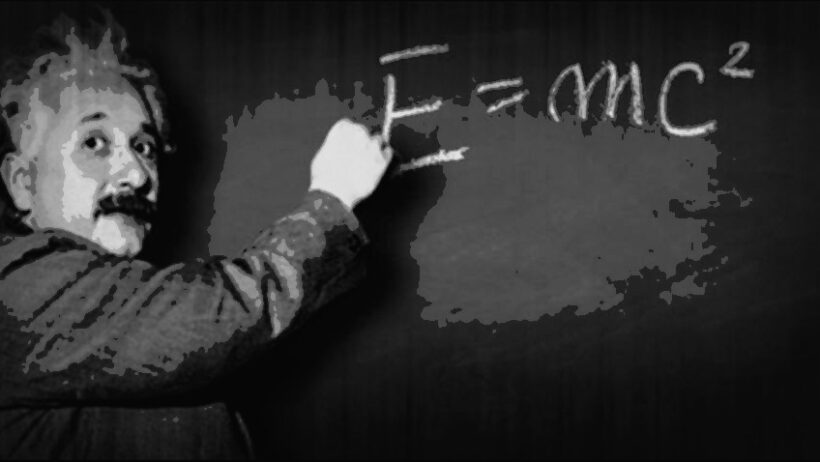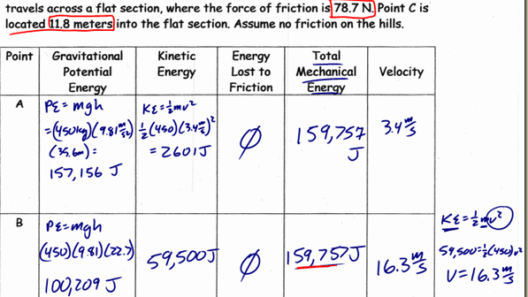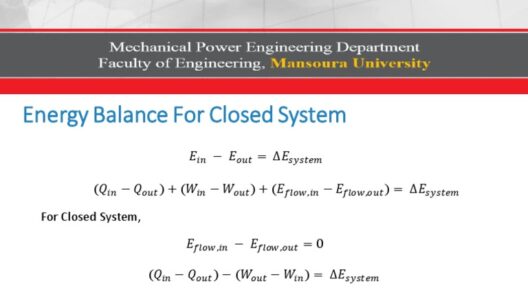Albert Einstein’s mass-energy equivalence formula, encapsulated in the equation E=mc², has become one of the most recognizable expressions in physics. This equation asserts that mass (m) can be converted into energy (E), with the speed of light (c) squared acting as a conversion factor. However, a comprehensive understanding of this relationship requires delving deeper into the historical context, the scientific principles involved, and the implications for conservation of energy.
The genesis of E=mc² can be traced back to Einstein’s transformative work in the early 20th century, particularly his special theory of relativity released in 1905. This theory fundamentally altered the perceived connection between mass and motion, rejecting classical assumptions that viewed mass and energy as separate entities. Instead, Einstein posited that they are inherently linked—a radical notion that challenged conventional wisdom. The equation suggests that even a small amount of mass can be converted into a tremendous amount of energy, owing to the square of the speed of light—a staggering value at approximately 300,000 kilometers per second.
To understand the principles behind E=mc², it is crucial to explore the concept of inertia, which continues to play a pivotal role in modern physics. Einstein proposed that as an object accelerates, its mass effectively increases, leading to an increased inertia. This phenomenon implies that as an object approaches the speed of light, its mass becomes significantly larger, requiring more energy to continue accelerating. This insight laid the groundwork for calculating energy outputs in nuclear reactions, where minute quantities of mass are converted into substantial energy releases.
The implications of E=mc² stretch beyond theoretical physics into practical applications, especially in the realm of energy conservation. Many might ponder: does this equation imply that conserving mass equates to conserving energy? The answer is nuanced. While energy itself cannot be created or destroyed—only transformed—mass, as dictated by relativity, can indeed be converted into energy in localized processes, such as fission and fusion.
In nuclear fission, heavy nuclei split into lighter nuclei, releasing energy that can be harnessed for power generation. For instance, when uranium-235 undergoes fission, the mass deficit—the difference between the mass of the reactants and the mass of the products—manifests as energy. Consequently, this conversion underscores the feasibility of utilizing mass as a renewable resource under specific conditions.
Moreover, the implications of this mass-energy relationship come into play in nuclear fusion, the process that powers stars, including our sun. In fusion, light nuclei combine under immense pressure and temperature to form heavier nuclei, again converting mass into energy. This process offers an enticing potential for generating energy on Earth, as it promises an almost limitless supply by harnessing isotopes of hydrogen, such as deuterium and tritium.
When examining the broader spectrum of energy conservation in relation to mass-energy equivalence, we encounter the second law of thermodynamics. This law posits that the total entropy of an isolated system can never decrease over time. Entropy elucidates the directionality of thermodynamic processes, establishing that energy transformations are not merely linear exchanges but occur in ways that increase disorder within a system. Therefore, while E=mc² provides the foundational equation for understanding the relationship between mass and energy, the conservation of energy in any process must also consider entropy and the inefficiencies prevalent in real-world scenarios.
In contemporary discourse, it is vital to distinguish between different conservation principles—mass conservation, energy conservation, and the overarching principle governing the intertwining of both. Mass conservation, as posited by Antoine Lavoisier in the 18th century, stated that mass in a closed system remains constant irrespective of transformations. However, Einstein’s insights suggest that, under certain conditions, mass can transition into energy, thereby altering our understanding of mass conservation in energetic contexts.
The question of whether Einstein’s mass-energy equivalence implicates the insufficiency of traditional conservation principles invites scrutiny. Conservation of mass energy does thrive, especially at macroscopic scales. Yet, at subatomic levels, Einstein’s revelations indicate a paradigm shift where mass-energy interchangeability manifests. This understanding challenges our perception of conservation laws, leading to intricate debates among physicists regarding the utility and applications of E=mc² beyond mere theoretical musings.
Ethically and environmentally, the potential exploitation of mass-energy equivalence presents both opportunities and challenges. As global energy demands surge, harnessing the power of nuclear fission and fusion represents a tantalizing avenue for reducing reliance on fossil fuels. However, questions surrounding waste management, safety, and ecological impact emerge. The environmental activist perspective underscores the urgency to prioritize sustainable and safe energy sources, urging rigorous oversight and research in nuclear technologies to mitigate potential risks.
Furthermore, the intricacies of E=mc² serve as a reminder of the interconnectedness of science and environmental stewardship. While Einstein’s equation underscores the potential to exploit mass-energy equivalence for energy conservation, it also demands a collective responsibility to navigate its ethical ramifications carefully. As we advance technologically and scientifically, embracing the wisdom of conservation principles is imperative to foster a sustainable future.
Ultimately, unpacking the profundity of E=mc² reveals a compelling narrative about the relationship between mass, energy, and conservation. Einstein’s groundbreaking equation not only illuminates the physics of transformation but also necessitates a reevaluation of how we approach environmental conservation in the age of scientific discovery. As we continue to fuel innovation and industry, understanding the nuances of energy conservation remains paramount in our quest to achieve a sustainable coexistence with nature.







